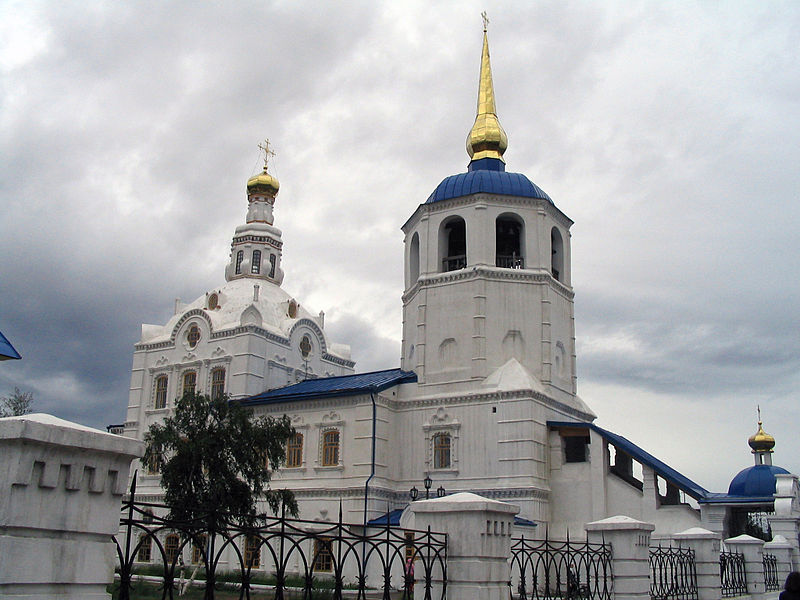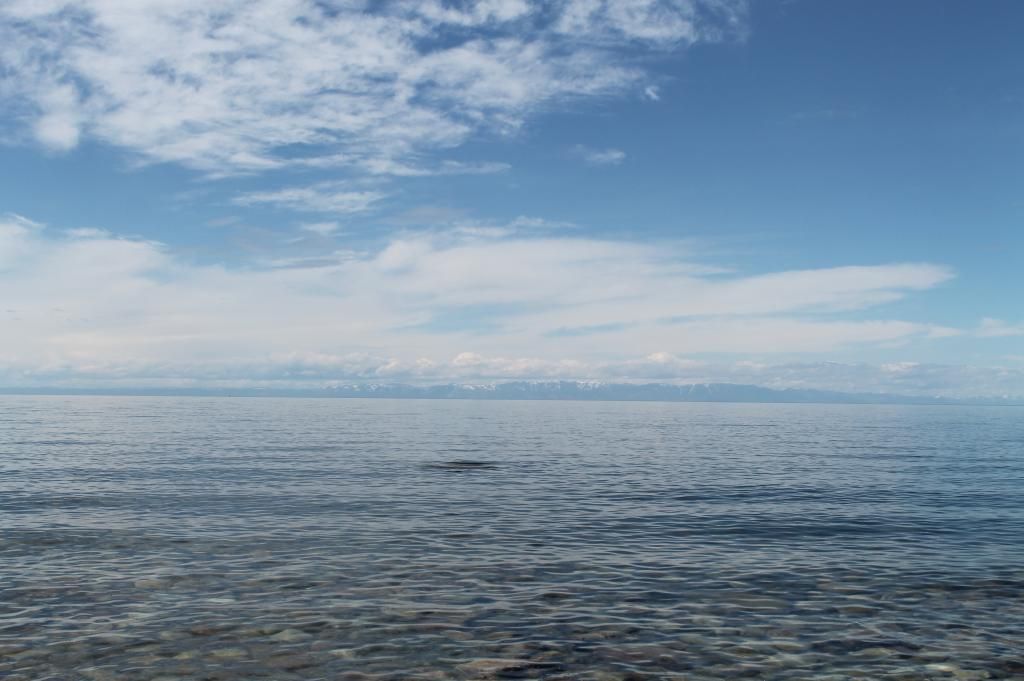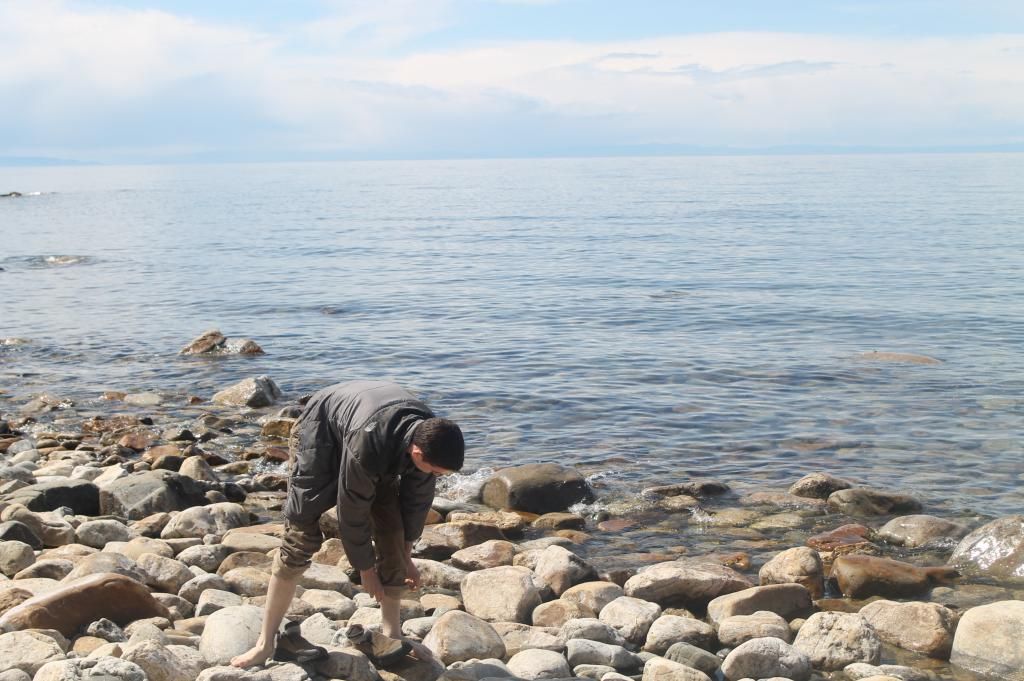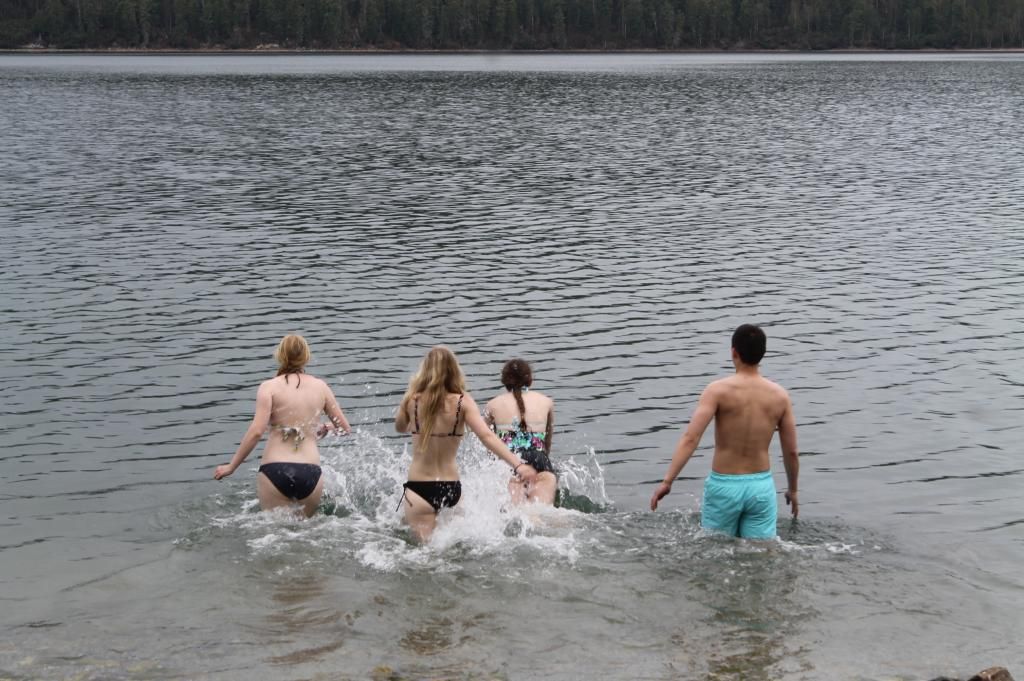Lake Baikal is comprised of an amazing array of ecosystems – a freshwater sea, an island, and mountains. However, pollution threatens to disrupt these delicate relations. Tourists and local residents visit sacred sites, leaving garbage behind, whereas worshipers try to leave their mark in a more environmentally friendly manner.
One of the key ideas of shamanic ritual is to give back to nature. A modern circuit of the Baikal area will inevitably expose visitors to some of the most beautiful natural scenes in the world, along with special spiritual places marked by bright scarves, called ‘himurin’. These spiritual places receive gifts from those following shamanic customs of giving back to nature. Passersby wishing to show respect frequently stop at the side of the road and sprinkle water or vodka on the ground of a spiritual place. Alternatively, when we cook outdoors, we will give a portion of the food, whether leftovers or scraps, back to nature.

Ritual poles, called serge, decorated with himurin.
Like any area inhabited by humans, however, Baikal is in danger. Spending more time here exposes the issues threatening the lake, such as the open-air dumps, and the factories pumping out chemicals that can stream into the water. Where people once left offerings of food and milk, now the ground is littered with garbage. The lake cries out with a critical question: just what are we giving back to Baikal today?

The view from one of the many sacred cliffs on Olhon Island.
The shamanic practice of leaving offerings represents the most basic concept of conservation: when we take something from nature, give back something that will contribute. Sprinkling water or leaving decomposable gifts will promote further growth on that spot, ensuring its beauty for future visitors. While our modern movements for conservation are only decades old, these shamanic practices have lasted for thousands of years.
Along with the breathtaking views and hopeful rituals, though, we have noticed something sad. At overlooks, beaches, and picnic spots all around the lake, we found piles of litter ranging from empty vodka bottles to rusty wrenches and broken bricks. Some residents and visitors here may continue shamanic rituals of giving back, but that conscientious attitude is not always shared by all people around Baikal.
Lake Baikal is renowned for its ability to cleanse itself, but how long can this last? No one knows exactly how much Baikal can handle, but everything we put into the lake or its watershed brings us closer to that limit. Open air dumps leave plastic bags blowing in the wind, and hardly a street can be found without empty bottles. Even inside the Pribaikalsky National Park, signs of littering or abandoned construction accompany every scattered table or gazebo. The mark of human habitation can be found almost everywhere with a close look.

Garbage on the shore of Baikal.
But humans give back the worst indirectly, for most of the pollution in the lake itself comes from industrial waste. The Baikalsk Paper Mill has attracted environmentalist attention for failing to keep up to water contamination limits. Likewise, the many factories on the Selenga River, Baikal’s largest tributary, release a huge variety of harmful chemicals into the water.
Nearby residents and factories may be the main concern, but we realize that as visitors to the lake, we are also part of the problem. Since we come to appreciate Baikal’s magnificent beauty and learn about it, we want to make sure we can give back and keep it pristine for future visitors.
What can we, as tourists, do to fix this pollution problem?
- Leave our picnic sites cleaner than we found them, making sure our candy wrappers don’t get taken by the wind
- Make an effort to stay on established trails whenever possible
- Collect only dead wood for fires, or even better, bring our own firewood
- Avoid driving around when we can walk
A small group of Carleton students can’t possibly solve all the problems facing the lake, but we can do our best to minimize our impact.

We love Baikal! Photo: Rada






























